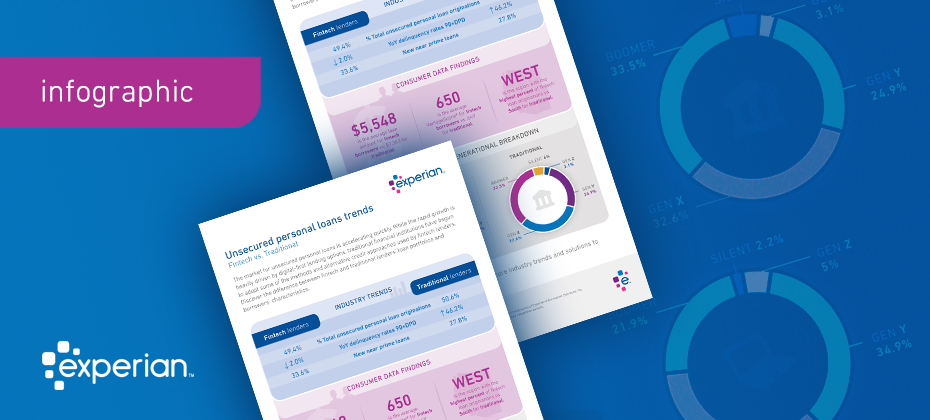Tag: consumer lending

Last week, artificial intelligence (AI) made waves in the news as the Vatican and tech giants signed a statement with a set of guidelines calling for ethical AI. These ethical concerns arose as the usage of artificial intelligence continues to increase in all industries – with the market for AI technology projected to reach $190.61 billion by 2025, according to a report from MarketsandMarkets™. In the “Rome Call for Ethics,” these new principles require that AI systems must adhere to ethical AI guidelines to protect basic human rights. The doctrine says AI must be developed with a focus on protecting and serving humanity, and that all algorithms should be designed by the principles of transparency, inclusion, responsibility, impartiality, reliability, security and privacy. In addition, according to the document, organizations must consider the “duty of explanation” and ensure that decisions made as a result of these algorithms are explainable, transparent and fair. As artificial intelligence becomes increasingly used in many applications and ingrained into our everyday lives (facial recognition, lending decisions, virtual assistants, etc.), establishing new guidelines for ethical AI and its usage has become more critical than ever. For lenders and financial institutions, AI is poised to shape the future of banking and credit cards. AI is now being used to generate credit insights, reduce risk and make credit more widely available to more credit-worthy consumers. However, one of the challenges of AI is that these algorithms often can’t explain their reasoning or processes. That’s why AI explainability, or the methods and techniques in AI that make the results of the solution understandable by human experts, remains a large barrier for many institutions when it comes to AI adoption. The concept of ethical AI goes hand-in-hand with Regulation B of the Equal Opportunity Act (ECOA), which protects consumers from discrimination in any aspect of a credit transaction and requires that consumers receive clear explanations when lenders take adverse action. Adverse action letters, which are intended to inform consumers on why their credit applications were denied, must be transparent and incorporate reasons on why the decision was made – in order to promote fair lending. While ethical AI has made recent headlines, it’s not a new concept. Last week’s news highlights the need for explainability best practices for financial institutions as well as other organizations and industries. The time is now to implement these guidelines into algorithms and business processes of the present and future. Join our upcoming webinar as Experian experts dive into fair lending with ethical and explainable AI. Register now

Article written by Melanie Smith, Senior Copywriter, Experian Clarity Services, Inc. It’s been almost a decade since the Great Recession in the United States ended, but consumers continue to feel its effects. During the recession, millions of Americans lost their jobs, retirement savings decreased, real estate reduced in value and credit scores plummeted. Consumers that found themselves impacted by the financial crisis often turned to alternative financial services (AFS). Since the end of the recession, customer loyalty and retention has been a focus for lenders, given that there are more options than ever before for AFS borrowers. To determine what this looks like in the current climate, we examined today’s non-prime consumers, what their traditional scores look like and if they are migrating to traditional lending. What are alternative financial services (AFS)? Alternative financial services (AFS) is a term often used to describe the array of financial services offered by providers that operate outside of traditional financial institutions. In contrast to traditional banks and credit unions, alternative service providers often make it easier for consumers to apply and qualify for lines of credit but may charge higher interest rates and fees. More than 50% of new online AFS borrowers were first seen in 2018 To determine customer loyalty and fluidity, we looked extensively at the borrowing behavior of AFS consumers in the online marketplace. We found half of all online borrowers were new to the space as of 2018, which could be happening for a few different reasons. Over the last five years, there has been a growing preference to the online space over storefront. For example, in our trends report from 2018, we found that 17% of new online customers migrated from the storefront single pay channel in 2017, with more than one-third of these borrowers from 2013 and 2014 moving to online overall. There was also an increase in AFS utilization by all generations in 2018. Additionally, customers who used AFS in previous years are now moving towards traditional credit sources. 2017 AFS borrowers are migrating to traditional credit As we examined the borrowing behavior of AFS consumers in relation to customer loyalty, we found less than half of consumers who used AFS in 2017 borrowed from an AFS lender again in 2018. Looking into this further, about 35% applied for a loan but did not move forward with securing the loan and nearly 24% had no AFS activity in 2018. We furthered our research to determine why these consumers dropped off. After analyzing the national credit database to see if any of these consumers were borrowing in the traditional credit space, we found that 34% of 2017 borrowers who had no AFS activity in 2018 used traditional credit services, meaning 7% of 2017 borrowers migrated to traditional lending in 2018. Traditional credit scores of non-prime borrowers are growing After discovering that 7% of 2017 online borrowers used traditional credit services in 2018 instead of AFS, we wanted to find out if there had also been an improvement in their credit scores. Historically, if someone is considered non-prime, they don’t have the same access to traditional credit services as their prime counterparts. A traditional credit score for non-prime consumers is less than 600. Using the VantageScore® credit score, we examined the credit scores of consumers who used and did not use AFS in 2018. We found about 23% of consumers who switched to traditional lending had a near-prime credit score, while only 8% of those who continued in the AFS space were classified as near-prime. Close to 10% of consumers who switched to traditional lending in 2018 were classified in the prime category. Considering it takes much longer to improve a traditional credit rating, it’s likely that some of these borrowers may have been directly impacted by the recession and improved their scores enough to utilize traditional credit sources again. Key takeaways AFS remains a viable option for consumers who do not use traditional credit or have a credit score that doesn’t allow them to utilize traditional credit services. New AFS borrowers continue to appear even though some borrowers from previous years have improved their credit scores enough to migrate to traditional credit services. Customers who are considered non-prime still use AFS, as well as some near-prime and prime customers, which indicates customer loyalty and retention in this space. For more information about customer loyalty and other recently identified trends, download our recent reports. State of Alternative Data 2019 Lending Report

Time – it’s the only resource we can’t get more of, which is why we tend to obsess over saving it. Despite this obsession, it can be hard for us to identify time-wasting activities. From morning habits to credit decisioning, processes and routines that seem, well, routine, can get in the way of maximizing how we use our time. Identifying the Problem Every morning, I used to turn on my coffee maker, walk to the bathroom to take my multivitamin, then walk back into the kitchen to finish making my coffee. This required maybe twenty steps to the bathroom and twenty steps back, and while this isn’t a huge amount of time—half a minute at best—it’s not insignificant, especially in the morning when time feels particularly precious. One day, I realized I could eliminate the waste by moving my multivitamin to the cabinet above my coffeemaker. What if we could all make minor changes to enhance our efficiency both at home and at work? Imagine how much time we could save by cutting out unnecessary steps. And how saving that time could help drive significant revenue increases. Time Equals Money When businesses waste time with unnecessary steps, that’s money from their bottom line, and out of the pockets of people who are connected to them. Over the last several years, a new time saver has emerged – Application Programming Interface (API). APIs allow application programs to communicate with other operating systems or control programs through a series of server requests or API calls, enabling seamless interaction, data sharing and decisioning. Experian’s partners utilize our ever-growing suite of APIs to quickly access better data, making existing processes more effective and routines more efficient. In the past, banks and other partners had to send files back and forth to Experian when they needed decisioning on a customer’s credit-worthiness prior to approving a new loan or extending a credit limit increase. Now, partners can have their origination system call an Experian API and send their data through that. Our system processes it and sends it back in milliseconds, giving the lenders real-time decisioning rather than shuttling information back and forth unnecessarily. Instead of effectively walking away from one process (assisting the customer/making coffee) to start another (retrieving credit info/walking down the hall to take the multivitamin), our partners are able to link these processes up and save time, allowing them to capitalize on the presence and interest of their customer. The Proof When Washington State Employees Credit Union, the second-largest credit union in the state, realized they needed to make a change to keep pace with increasing competition, they turned to Experian. With our solution, the credit union is now able to provide its members with instant credit decisioning through their online banking platform. This real-time decisioning at the point of member-initiated contact increased the credit union’s loan and credit applications by 25%. Additionally, member satisfaction increased, with 90% of members finding the simplified prequalification process to be more efficient. By accessing Experian’s decisioning services through your existing connection, lenders can to save time and match consumers with the products that match their credit profile before they apply – increasing approval rates once the application is submitted. Best of all, the entire process with the consumers is completed within seconds. Find out how Experian’s solutions can help you improve your existing processes and cut out unnecessary steps. Get started

In today’s age of digital transformation, consumers have easy access to a variety of innovative financial products and services. From lending to payments to wealth management and more, there is no shortage in the breadth of financial products gaining popularity with consumers. But one market segment in particular – unsecured personal loans – has grown exceptionally fast. According to a recent Experian study, personal loan originations have increased 97% over the past four years, with fintech share rapidly increasing from 22.4% of total loans originated to 49.4%. Arguably, the rapid acceleration in personal loans is heavily driven by the rise in digital-first lending options, which have grown in popularity due to fintech challengers. Fintechs have earned their position in the market by leveraging data, advanced analytics and technology to disrupt existing financial models. Meanwhile, traditional financial institutions (FIs) have taken notice and are beginning to adopt some of the same methods and alternative credit approaches. With this evolution of technology fused with financial services, how are fintechs faring against traditional FIs? The below infographic uncovers industry trends and key metrics in unsecured personal installment loans: Still curious? Click here to download our latest eBook, which further uncovers emerging trends in personal loans through side-by-side comparisons of fintech and traditional FI market share, portfolio composition, customer profiles and more. Download now

Would you hire a new employee strictly by their resume? Surely not – there’s so much more to a candidate than what’s written on paper. With that being said, why would you determine your consumers’ creditworthiness based only on their traditional credit score? Resumes don’t always give you the full picture behind an applicant and can only tell a part of someone’s story, just as a traditional credit score can also be a limited view of your consumers. And lenders agree – findings from Experian’s 2019 State of Alternative Credit Data revealed that 65% of lenders are already leveraging information beyond the traditional credit report to make lending decisions. So in addition to the resume, hiring managers should look into a candidate’s references, which are typically used to confirm a candidate’s positive attributes and qualities. For lenders, this is alternative credit data. References are supplemental but essential to the resume, and allow you to gain new information to expand your view into a candidate – synonymous to alternative credit data’s role when it comes to lending. Lenders are tasked with evaluating their consumers to determine their stability and creditworthiness in an effort to prevent and reduce risk. While traditional credit data contains core information about a consumer’s credit data, it may not be enough for a lender to formulate a full and complete evaluation of the consumer. And for over 45 million Americans, the issue of having no credit history or a “thin” credit history is the equivalent of having a resume with little to no listed work experience. Alternative credit data helps to fill in the gaps, which has benefits for both lenders and consumers. In fact, 61% of consumers believe adding payment history would have a positive impact on their credit score, and therefore are willing to share their data with lenders. Alternative credit data is FCRA-compliant and includes information like alternative finance data, rental payments, utility payments, bank account information, consumer-permissioned data and full-file public records. Because this data shows a holistic view of the customer, it helps to determine their ability to repay debts and reveals any delinquent behaviors. These insights help lenders to expand their consumer lending universe– all while mitigating and preventing risk. The benefits can also be seen for home-based and small businesses. Fifty percent of all US small businesses are home-based, but many small business owners lack visibility due to their thin-file nature – making it extremely difficult to secure bank loans and capital to fund their businesses. And, younger generations and small business owners account for 58% of business owners who rely on short term lending. By leveraging alternative credit data, lenders can get greater insights into a small business owner’s credit profile and gauge risk. Entrepreneurs can also benefit from this information being used to build their credit profiles – making it easier for them to gain access to investment capital to fund their new ventures. Like a hiring manager, it’s important for lenders to get a comprehensive view to find the most qualified candidates. Using alternative credit data can expand your choices – read our 2019 State of Alternative Credit Data Whitepaper to learn more and register for our upcoming webinar. Register Now

Alex Lintner, Group President at Experian, recently had the chance to sit down with Peter Renton, creator of the Lend Academy Podcast, to discuss alternative credit data,1 UltraFICO, Experian Boost and expanding the credit universe. Lintner spoke about why Experian is determined to be the leader in bringing alternative credit data to the forefront of the lending marketplace to drive greater access to credit for consumers. “To move the tens of millions of “invisible” or “thin file” consumers into the financial mainstream will take innovation, and alternative data is one of the ways which we can do that,” said Lintner. Many U.S. consumers do not have a credit history or enough record of borrowing to establish a credit score, making it difficult for them to obtain credit from mainstream financial institutions. To ease access to credit for these consumers, financial institutions have sought ways to both extend and improve the methods by which they evaluate borrowers’ risk. By leveraging machine learning and alternative data products, like Experian BoostTM, lenders can get a more complete view into a consumer’s creditworthiness, allowing them to make better decisions and consumers to more easily access financial opportunities. Highlights include: The impact of Experian Boost on consumers’ credit scores Experian’s take on the state of the American consumer today Leveraging machine learning in the development of credit scores Expanding the marketable universe Listen now Learn more about alternative credit data 1When we refer to "Alternative Credit Data," this refers to the use of alternative data and its appropriate use in consumer credit lending decisions, as regulated by the Fair Credit Reporting Act. Hence, the term "Expanded FCRA Data" may also apply in this instance and both can be used interchangeably.

Millions of consumers lack credit history and/or have difficulty obtaining credit from mainstream financial institutions. To ease access to credit for “invisible” and below prime consumers, financial institutions have sought ways to both extend and improve the methods by which they evaluate borrowers’ risk. This initiative to effectively score more consumers has involved the use of alternative credit data.1 Alternative credit data is FCRA-compliant data that is typically not included in a traditional credit report and is used to deliver a more complete view into a consumer’s creditworthiness. “Alternative credit data helps us paint a fuller picture of a consumer so they can get better access to the financial services they need and deserve,” said Alpa Lally, Vice President of Data Business at Experian. Experian recently sponsored the FinovateSpring conference in San Francisco, where Alpa had a chance to sit down with Jacob Gaffney, Editor-in-Chief of the HousingWire News Podcast, to discuss ways consumers can improve their credit scores. As an immigrant, Alpa spoke personally about the impact of having a limited credit history and how alternative credit data can help drive greater access to credit for consumers and profitable growth for lenders through more informed lending decisions. Highlights include: How alternative and traditional credit data differ Types of alternative credit data being used by lenders How “credit-invisibles” can best leverage alternative credit data Alternative credit data product solutions, including Experian BoostTM Listen now 1When we refer to “Alternative Credit Data,” this refers to the use of alternative data and its appropriate use in consumer credit lending decisions, as regulated by the Fair Credit Reporting Act. Hence, the term “Expanded FCRA Data” may also apply in this instance and both can be used interchangeably.

Shawn Hanson, CEO of Marine Credit Union in Wisconsin, knows a thing or two about growth. Over the past 18 years as CEO, Shawn and his team have the grown the credit union significantly, both organically and through acquisitions. In addition, he has developed a clear vision to reach the underserved. I spoke with Shawn to get his perspective and insights about growth, risk and the underserved. Here’s what he had to say: Marine Credit Union has grown from $120M to $789M over the past 18 years under your leadership. What have been the top 2-3 actions you’ve taken to fuel this growth? The past two decades of growth have included a lot of successes, but also some key failures. Failures that taught us some hard lessons in who we are – and who we are not. If I can point to one action that has had the most impact on our growth, it is the refinement of our focus. We clarified our mission, vision and strategy and aligned our business decisions accordingly. Over the past 18 years as CEO, what has been your proudest moment? (Or proudest moments?) I reach out to employees on a regular basis and ask them to share with me a story of how they impacted a member’s life. I hear stories of people who never thought they would dig themselves out of a financial hole, and people we are helping to save thousands of dollars each month in bill payments. I feel so fortunate that I get to hear these stories every day. So, to answer your question, my proudest moment will happen today when I hear that next story. Then again tomorrow. And again, the next day. What drove Marine’s decision to focus on serving the underserved? I started my career in the consumer finance industry, so it is where my roots lie. Over time, we have come to discover that serving the underserved is not only a good business to be in, it is a business that is good. A business that is doing well while doing good – performing financially while giving back to its communities – is a business that people want to be around. How does your credit union define underserved? What services does your staff offer members that are unique? We define the underserved as people who cannot typically get help down the block. While this most often means individuals, who are credit-challenged, it is more than that. Our underserved can be an overleveraged borrower who needs some help simplifying their life and streamlining bill payments. We have a debt consolidation product that’s a perfect fit for that situation. Our underserved can be a self-employed borrower whose income statements don’t fit inside a neat box, a homebuyer with an unconventional property. or an immigrant with alternative documentation. Our in-house underwriting and decentralized decision-making structure give us more flexibility to serve our underserved. Given your credit union’s history of growth through acquisitions, how have you preserved the culture of reaching the underserved? We are experienced, but we are not perfect. When it comes to the integration of employees, we learn through each acquisition. Our strategy is very different from other financial institutions, and we know this creates a learning curve for merging employees. Cultural integration is incredibly important to us. We have taken this too slow, too fast and everywhere in between. What we know for certain is that one size does not fit all. Whatever approach we decide on for a cultural integration, we do it with intention and two key principles in mind: do what’s best for the employees and the members. Why do you think credit unions are uniquely positioned to reach & serve the underserved? Talk about roots; this is where we were born. Serving the underserved is in our credit union DNA. Beyond our history, it is what we are known for: people helping people. Credit unions have built a legacy of trust with the communities we serve. Trust has become a coveted commodity. What is the biggest misperception among credit unions regarding the topic of serving the underserved? It’s too risky. One of the underpinnings of the credit union movement is providing a path to affordable credit. What should risk-adverse credit unions think about when evaluating their mission? Think about the role you play in your community; how would the world be poorer, but for your presence? If you can answer with clarity, you're serving a need. Everybody seems to be chasing the most qualified borrowers today. We're focused on being there for the rest. Marine’s mission is to “create a better future for themselves and their families”. What has been the biggest surprise for you serving the underserved? We call it “the snowball effect.” Repeatedly, we have seen one small “yes” turn into a remarkably different life for a member we have helped. A car loan led to transportation to work, which led to a steady job, which led to a promotion, which led to buying a home. I never underestimate the power of a chance. How has your board helped to accelerate the mission to reach the underserved? What advice do you have for boards who are concerned of taking on more perceived risk? I feel very fortunate to work with a Board of Directors who has accelerated our mission in many ways, but most importantly, by having an open mind and allowing themselves to think differently. Our Board is always learning and always pushing me, one another and the credit union to be better. Strategic planning season is upon us. What advice do you have for credit unions looking to lend deeper? Hone your focus. Know who you are and who you are not. Know who you serve and who you do not. Get aligned on where you want to be 5, 10 and 20 years from now, and work backward. What do you need to be focusing on in 2019 to achieve your long-term goals, and what do you need to stop wasting energy on? Ensure your people, products and processes are aligned and scaled to support a diversification or transition. This can take years to build or evolve. Walk, don’t run. About Shawn Hanson Shawn Hanson is the CEO of Marine Credit Union. He has been with the credit union since April 2000 when the credit union had two offices and $37 million in assets. Hanson’s vision for the future is a differentiated financial institution that provides services to a broad geographic base with the best service. Hanson has also held positions at Citizens Community Federal Credit Union and AVCO Financial Services. Learn more about the array of alternative credit data sources available to financial institutions to reach your underserved populations.

Consumers want to pay less. This is true in retail and in lending. No big surprise, right? So in order for lenders to capitalize and identify the right consumers for their respective portfolios, they need insights. Lenders want to better understand what rates consumers have. They want to know how much interest their customers pay. They want to know if consumers within their portfolio are at risk of leaving, and they want visibility into new prospects they can market to in an effort to grow. Luckily, lenders can look to trade level fields to be in the know. These inferred data fields, powered by Trended Data, allow lenders to offer products and terms that serve two purposes: First, their use in response models and offer alignment strategies drive better performance, ROI and life-time value. As noted earlier, consumers want to pay less, so if they are offered a better rate or money-saving offer, they’re more likely to respond. Second, they ultimately save consumers money in a way that benefits each consumer’s unique financial situation- overall savings on interest paid over the life of the loan, or consolidation of other debt often combined for a lower monthly payment. These trade level fields allow lenders to dig into various trends and insights surrounding consumers. For example, Experian data can identify big spenders and transactors (those who pay off their purchases every month). Research reveals these individuals love to be rewarded for how they use credit, demanding rewards, airline miles or other goodies for the spending they do. They also really like to be rewarded with higher credit lines, whether they use the increased line or not. Fail to serve these transactors in the right way and lenders could be faced with lackluster performance in the form poor response rates, booking rates, activation rates and early attrition. Thus, a little trade level insight can go a long way in helping lenders personalize products, offers and anticipate future financial needs. Knowing the profitability of a customer across all of their accounts is important, and accessing this intelligence in a seamless way is ideal. The data exists. For lenders, it’s just a matter of unlocking it, making those small, but meaningful changes and keeping a pulse on the portfolio. Together, these strategies can help lenders keep their best customers and acquire new ones that stick around longer.

The pendulum has swung again. The great recession brought a glacial freeze to access to capital. The thaw brought rapid, frictionless underwriting with an almost obsessive focus on growth and customer experience. Enter Marketplace Lenders and their more “flexible” approach to credit risk assessment. While much good has come from this evolution in financing, new challenges have surfaced – especially as it pertains to fraud prevention and credit risk management. Stacking has emerged as a particularly knotty problem in the small business lending space. Applicants have the opportunity to apply for and be approved for multiple loans in a matter of days or even hours. Technology allows for underwriting that is at least somewhat automated and depositing often occurs within hours of approval. The speed of fulfillment is a boon for small businesses. However, it also makes it possible to be approved and draw down funds on multiple loans in quick succession. Core underwriting metrics, such as debt-to-income ratios and cashflow, are unreliable in the face of ratcheting debt from concurrent online business loans. This situation occurs because the window between the approval of the loan and delivery of the funds is much shorter than the timeframe to report the loan to credit reporting agencies and other third-party data suppliers. Not all lenders report small business loans, further compounding the problem. Lenders’ risk and pricing strategies are hamstrung in the face of stacking, whether intentional on the part of the small business or not. If a struggling small business applies for credit and receives multiple loan offers, should we rely on their ability to resist the temptation to accept them all and use the funds wisely? No. The burden rests squarely on the credit provider to proactively address the problem. Technology-enabled frictionless underwriting underpins the online consumer loan space and facilitates a similar, yet subtly different stacking problem. There are a large number of loan providers, with a spectrum of risk appetites and pricing strategies. This all but ensures that a consumer has access to additional loans at an ever-increasing interest rate. The underlying assumption, among the more mainstream, lower-rate providers, is that the consumer is disclosing all of their obligations – including any recent loans. Although reporting in the consumer space is more robust and timely, it is still possible for an applicant to quickly access and draw funds on several loans within a very short timeframe, making it difficult for loan providers to get a full and complete picture of their capacity to repay the loan. The situation is further complicated by lenders at the higher risk, higher rate end of the market whose business models are structured to allow for, and perhaps even encourage, stacking by the consumer. Fortunately, there are a number of steps lenders can take to improve the situation: Contribute credit data to the credit reporting agencies. Know your customer, their industry, their market and underwrite appropriately. Develop a tailored underwriting approach that achieves a balance between frictionless customer experience and prudent credit and risk assessment. All applicants are not equal, and some require additional scrutiny and more time to underwrite. Understand the drivers and indicators of stacking. The latter point is worth emphasizing. The time to address stacking is prior to funding. This requires the lender to anticipate, identify and pre-empt stackers. There is no 100 percent foolproof remedy. However, lenders can stack (pun-intended) the odds in their favor. For example, if an existing loan has a high balance and is delinquent, might that be an indicator of a propensity to stack? What if the business owner has applied for multiple loans, resulting in multiple inquiries, over a 45-day period? A proactive, data-driven anti-stacking strategy can yield positive results, reducing delinquency and losses. In combination with consistent comprehensive reporting to the bureaus, it can go a long way toward reducing the risk posed by this largely invisible threat.